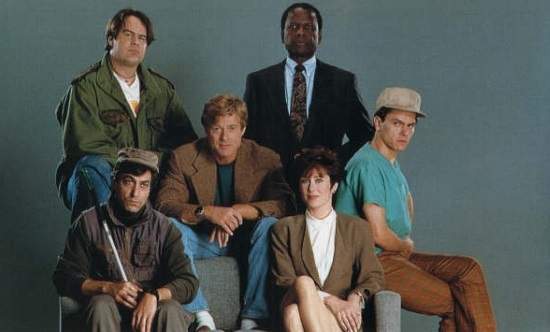As movie enthusiasts and hobbyist hackers likely know, 27 years ago today, Universal Studios released the popular spy caper Sneakers movie. If you’ve seen it, you know that Robert Redford’s character Martin Bishop and his team of ex-hacker turned security specialists successfully fool a voice recognition system in order to recover a black box for the NSA – or so they think. They do this by tricking a scientist named Werner Brandes to say certain words which they then piece together into a recording:
“Hi, my name is Werner Brandes. My voice is my passport. Verify me.”
In the 1992 Sneakers movie, their plan worked. Bishop and team successfully gain access to Werner’s office and recover the black box they are after.
Sure Sneakers was fiction, but the concept of voice recognition wasn’t as futuristic as it may have seemed to viewers at the time. Texas Instruments developed the first speaker recognition prototype in 1976. By the mid 1980s, the NIST Speech Group was established to evaluate the emerging area of speech processing. However, challenges with accuracy and security kept adoption weak for years until advances such as AI and machine learning enabled significant performance improvements. Today, the technology is clearly taking hold with firms like Grand View Research predicting the global speech and voice recognition market to reach $31.82 billion by 2025.
Unfortunately, just as AI and voice technology have experienced explosive growth, so have the vulnerabilities exposed by the Sneakers movie team nearly 30 years ago. And the threat of bad actors gaining unauthorized access through voice impersonation, or spoofing, is now much greater given the extraordinary developments in computer-altered speech, synthesized voice and high-definition recordings. Voice biometric spoofing is still a very real threat and unlike the good guys in the Sneakers movie, the people doing it nearly always have bad intentions.
Fortunately, technology designed to combat these kind of attacks – anti-spoofing protection or “liveness detection” solutions – are available to identify fraudsters and prevent unauthorized access. The anti-spoofing protection technology uses deep learning to detect artifacts, often inaudible to a human ear, that aren’t present in a live voice. Once liveness is confirmed the voice recognition system can verify a biometric match and authorize access. Or, if someone is playing a recorded voice or a computer-generated voice developed to mimic a specific person, liveness detection will instantly detect the unauthorized attempt and prevent access. It takes just milliseconds.
Good for the general public, but not so much for a modern-day Martin Bishop. A Sneakers remake would certainly need a pretty hefty update to arm Redford with the tools he’d need for a successful heist given the biometric anti-spoofing protection security available to today’s security teams.
You can learn a lot more about anti-spoofing protection including voice liveness and passive facial liveness (to prevent spoofing of face recognition systems) here.

And, if you haven’t seen Sneakers, it’s got a great cast including RobertRedford, Dan Aykroyd, Ben Kingsley, Mary McDonnell, and River Phoenix. And while we’d love to give you more plot details, as the movie’s tagline warns, “We could tell you what it’s about but then, of course, we’d have to kill you.”
